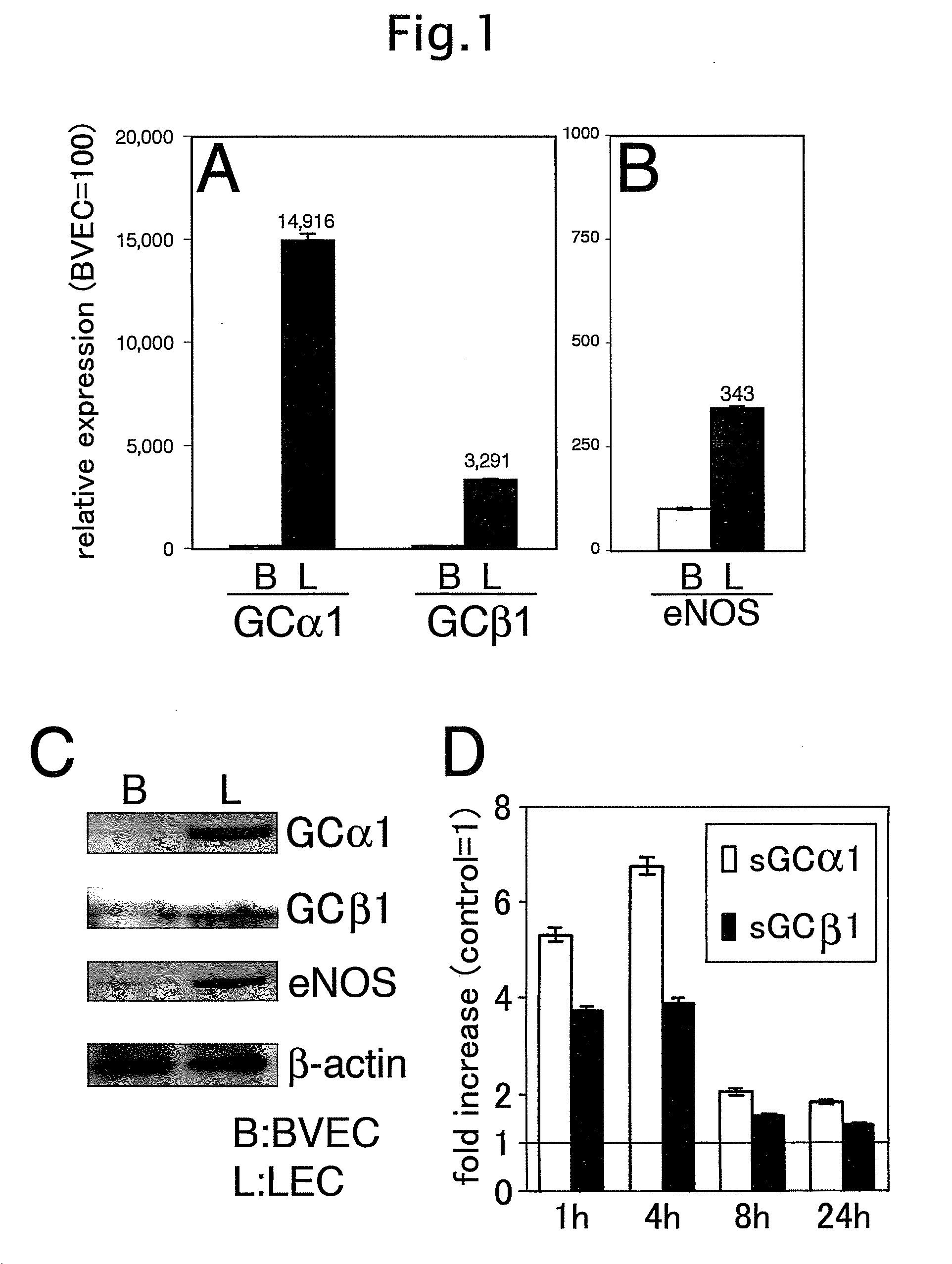Method for inhibiting lymphangiogenesis and inflammation
- Summary
- Abstract
- Description
- Claims
- Application Information
AI Technical Summary
Benefits of technology
Problems solved by technology
Method used
Image
Examples
examples
Materials and Methods
Cells
[0034]Human dermal BVEC and LEC were isolated from neonatal human foreskins by immunomagnetic purification as previously described(18, 19). The lineage-specific differentiation was confirmed by real-time RT-PCR for the lymphatic vascular markers Prox1, LYVE-1 and podoplanin, and for the blood vascukar endothelial markers VEGF receptor-1 and VEGF-C, as well as by immunostains for CD31, Prox1 and podoplanin as described(18, 19). Cells were cultured in endothelial basal medium (Cambrex, Verviers, Belgium) supplemented with 20% fetal bovine serum (Gibco, Paisley, UK), antibiotics, 2 mM L-glutamine, 10 μg / ml hydrocortisone and 2.5×10−2 mg / ml N-6,2-O-dibutyryl-adenosine 3′,5′-cyclic monophosphate (all from Fluka, Buchs, Switzerland) for up to eleven passages.
Quantitative Real-Time RT-PCR
[0035]Total cellular RNA was isolated from confluent BVEC and LEC cultures at passage 5 using the Trizol reagent (Invitrogen, Carlsbad, Calif.). After treatment with RQ1 RNase-fre...
PUM
 Login to View More
Login to View More Abstract
Description
Claims
Application Information
 Login to View More
Login to View More - R&D
- Intellectual Property
- Life Sciences
- Materials
- Tech Scout
- Unparalleled Data Quality
- Higher Quality Content
- 60% Fewer Hallucinations
Browse by: Latest US Patents, China's latest patents, Technical Efficacy Thesaurus, Application Domain, Technology Topic, Popular Technical Reports.
© 2025 PatSnap. All rights reserved.Legal|Privacy policy|Modern Slavery Act Transparency Statement|Sitemap|About US| Contact US: help@patsnap.com



